Based upon longevity, cross-platform popularity, and cultural penetration (film, TV, comics), D.C. Comics is thought of as having three iconic characters: Batman, Superman, and Wonder Woman. So, where does that put The Flash? He’s been around almost as long, premiering in 1940. However, he’s in that second tier, even though the CW has announced that Barry Allen will be a recurring character in three episodes of the upcoming season of Arrow, with his final episode acting as a backdoor pilot for his own spin-off show centering around him as The Flash.
But, wait, who is The Flash? He’s the Scarlet Speedster from Central City with goofy-sounding villains (Captain Boomerang?) who are surprisingly awesome due to being so mundane and kind of pathetic. The first Flash (Jay Garrick) was part of the Golden Age and was a founding member of the Justice Society of America (the predecessor the Justice League), but was canceled by D.C. due to public disinterest in 1949. The second Flash (Barry Allen) was the first superhero D.C. revived in 1956 as part of the Silver Age of comic books. He helped found the Justice League alongside Superman and Batman, and got his own sidekick, Kid Flash, who was actually his nephew Wally West. D.C. killed Barry Allen off in 1985 as part of a huge continuity-shattering event, and Wally West became the Flash. Barry also had another sidekick named Impulse, who was actually his grandson from the future. Impulse, real name Bart Allen, has since become the Flash at this point.
Regardless of which version, The Flash is more prone to sarcasm and witty one-liners than most D.C. heroes. Heck, even his villains kind of like him. However, as the history of The Flash on TV will indicate, he’s pretty much always been the guest star to Batman or Superman but rarely ever the star:
Superfriends (1973-1974, 1977-1983, 1984-1986)
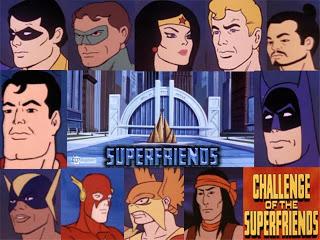
This was an overly kids-friendly version of the Justice League, featuring Superman, Batman and Robin, Wonder Woman, and Aquaman along with sidekicks the Wonder Twins and Wonderdog. The Flash (Barry Allen version) was initially a guest star before joining the cast as a regular character during the show’s third season, at which point it was called Challenge of the Super Friends (by my count, Superfriends went by at least 6 different names during its 13-year-run). He was voiced by Jack Angel. No Flash sidekicks, but the Flash villains Captain Cold and Gorilla Grodd were members of the The Legion of Doom, who were central to the “Challenge of the Super Friends” era. The Flash villain Mirror Master also showed up in one episode.
You can catch a quick bit of The Flash fighting Captain Cold in this introduction from Challenge of the Super Friends:
The entirety of the Superfriends was never particularly concerned with characterization and faithfulness to the comic books. So, yes, The Flash was a character on the show, but other than the fact that he was super fast you didn’t learn much more about him. Superfriends was Hannah-Barbara ‘s mainstay of Saturday mornings and syndication for over a decade, but now has a reputation for nauseating fluffiness that would put the Staypuff Marshmallow Man to shame. However, it was for many a person their first introduction to the D.C. universe, and nostalgia is sneaky powerful
Legend of the Superheroes (1979)
Quick, before it’s too late, avert your eyes!

You can’t say I didn’t warn you. Now, to explain this horrific image…
Based upon the success of Superfriends, Hanna-Barbara ran two one-hour live-action specials called Legend of the Superheroes which generally co-opted the then-popular variety show format to do live action versions of Superfriends. The first special involved the Legion of Doom plotting against the Superfriends, and the second special included various bits including an extended roast of the Superfriends.
In this clip, somebody named “Ghetto Man” roasts the Superfriends, including The Flash, dropping comedic gems like, “If Hawkman thinks he so tough wait till he walks through Harlem.”
These specials were obviously incredibly strange, updating the camp of the live-action Batman show of the 1960s (with Adam West and Burt Ward reprising their roles as Batman and Robin respectively) by adding a crap-ton of other DC heroes and villains and incorporating a laugh track. Unfortunately, this is actually the live-action debut of The Flash. Also making their debut – a debut so horrendous no amount of Men in Black-style mind erasing can truly scrub from your mind – were Green Lantern, Hawkman, The Huntress, The Atom and Black Canary. Rod Haase played The Flash.
The Flash (1990-1991)
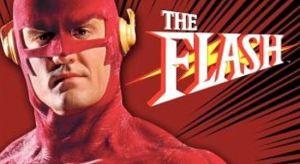
Right now, the producers behind Arrow are pretty much just doing the Batman Begins version of Green Arrow. Well, this is not the first time a successful Batman film or film franchise has been used as the template for how to treat another DC comic book character in a TV show. Back in 1990, the world was only a year removed from the ginormous success of Tim Burton’s Batman (remember that the 1989 Batman actually sold more tickets than both Batman Begins and The Dark Knight Rises did in recent years). So, of course the inevitable copycat craze was on its way.
CBS premiered The Flash, and the Tim Burton mimicry was such that they even hired the same composer as 1989′s Batman (Danny Elfman) to score the orchestral theme for the show.
Here it is:
This was the Barry Allen version in name, although some attributes were borrowed from Wally West (i.e., the name of his girlfriend, his need to carbo-load after expending so much energy). The lead role went to John Wesley Shipp, and the costume was designed by the same guy (Dave Stevens) who did the same for The Rocketeer. The show lightened its Burton-esque tone in the second half of the season, at which point it began introducing some of Flash’s villains, most notably Mark Hamill as The Trickster (who was clearly fine-turning the voice he’d use later as The Joker on Batman: The Animated Series).
It was actually pretty good and well-liked, but not even Barry Allen could keep up with the many different timeslots CBS gave the show in the course of just 22 episodes. Treated properly, it could have certainly enjoyed a decent Lois & Clark: The New Adventures of Superman-style run. Alas, viewers couldn’t keep up with the timeslot changes, and it was canceled.
Superman: The Animated Series (1996-2000)

Superman: The Animated Series is known as the perpetual ugly stepchild to Batman: The Animated Series (1992-1995). It was from the same exact creative team, featuring Bruce Timm’s signature angular, art-deco inspired animation (as well as his tendency to draw all female characters as pixies–what the hell, man?) and Paul Dini’s knack for pulling from various sources to deliver the definite takes on certain characters. However, owing to the differences in the central characters Superman was a literally brighter show (nowhere near as many scenes at night) as well as lighter show (tonally). It is perhaps as good a take on Superman (voiced admirably by Tim Daly) as could be expected. It’s just not Batman: The Animated Series.
But the Flash actually made sense on Superman: The Animated Series whereas he would have stuck out like a sore thumb on Batman. Superman featured occasional team-ups with other D.C. heroes (Cyborg, Batman). The Flash, voiced by Charlie Schlatter, only featured in such a team-up in one episode, “Speed Demons” from the second season. The storyline, borrowed from the comic books, sees Superman and The Flash (no origin story depicted, he’s already The Flash; not sure which version) racing each other across Earth to see who is actually the fastest (plus, the race raises money for charity, but it’s really more the who’s faster part).
Of course, The Flash villain Weather Wizard is just a big ole jerk who uses the global force being created by the two heroes superspeed to try and take over the world.
Justice League of America (1997)
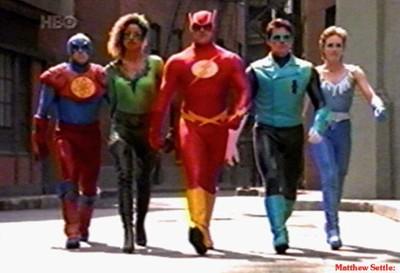
Why? Just, why?
Allow me to explain: in 1997, CBS commissioned a movie-length pilot focusing on a female meterologist who gains superpowers, calls herself Ice afterwards, and joins a Justice League consisting of The Flash (Barry Allen version in name only), Green Lantern (the Guy Gardner version), The Atom, Fire, and Martian Manhunter (played by David Ogden Stiers!!!). It looked cheap, the costumes horrible, most of the characters behaved nothing like their comic book counterparts, and the jokes were unfunny. It never aired in America (thank the Lord for small miracles), but it was unleashed upon an unsuspecting world, some of whom were so scarred by their emotional trauma from viewing the pilot/movie that they’ve never again viewed a single D.C. comic book-related film/TV property. I hope you’re happy, Justice League of America.
Kenny Johnston played The Flash, and although you would have assumed otherwise the costume they gave him was light years worse than that worn 7 years earlier by John Wesley Shipp in The Flash TV series. At the time, the show was described as trying to be Friends for superheroes, and featured talking-head confessional videos from each of the heroes, Real World-style, which could have actually worked but like everything else on screen failed considerably.
Smallville (2001)
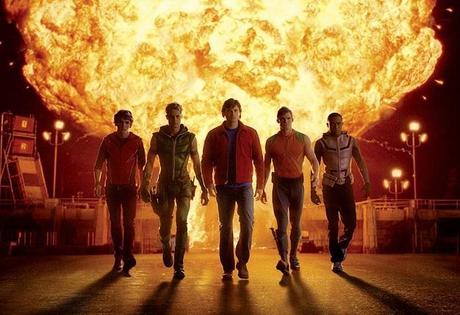
That’s Flash, Green Arrow, Superma…whatever the hell he was calling himself at the time, Aquaman, and Cyborg from the increasingly crazy-town bonkers Smallville.
Designed to fill the recently created Buffy the Vampire Slayer-sized hole in the WB’s schedule, Smallville was Superboy without the cape and flying. It was an initial hit, with Tom Welling’s adorably dim-witted Clark Kent only gradually learning the truth of his identity. However, much as Arrow is doing now Smallville eventually incorporated other D.C. heroes, most notably Justin Hartley’s version of Oliver Queen as a regular character. Over time, Clark Kent practically became a supporting character in an ensemble of D.C. heroes as opposed to the center of his own show. They went full-on Justice Society/League toward the end there.
The Bart Allen (minus the whole traveling to the present from the future angle) version of Flash joined the rotation of heroes in the fourth season episode “Run,” at a time in the show’s run when other heroes showing up was a big deal. This version, played by Kyle Gallner, went by Bart Allen while also carrying around fake identification as Jay Garrick, Barry Allen, and Wally West. He was played as your basic self-centered teenager who needed the guiding hand of Clark Kent to put him on the path toward righteousness.
Here’s their first meeting:
In a funny, meta-like turn of events, Bart Allen’s first episode featured him running afoul of Lex Luthor, which meant that Michael Rosenbaum, who at that time both played Luthor on Smallville and voiced The Flash on Justice League/Justice League Unlimited, got to act as a villain against The Flash in a live-action setting.
Bart Allen returned a slightly more tolerable brand of cocky in later seasons as a member of Green Arrow and Chloe Sullivan’s Justice League, in which he was referred to as Impulse (a name they gave him). In his initial appearance, he simply wore color-coded clothing (lots of red) ala Clark Kent (always in red and blue) before adopting an actual superhero costume upon joining the Justice League.
Justice League/Justice League Unlimited (2001-2006)
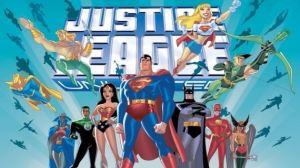
Existing within the same continuity as Batman: TAS, Superman: TAS, Batman Beyond, and Static Shock, Justice League has been rather accurately described by Bruce Timm as starting as “Superfriends but played straight.” The superhero roster consisted of both traditional (Superman, Batman, Green Lantern, The Flash, Wonder Woman, Martian Mahunter) and non-traditional (Hawkwoman instead of Aquaman) founding members of the Justice League. Plus, instead of the Hal Jordan Green Lantern they used John Stewart (cue Daily Show joke now), and instead of Barry Allen they used Wally West. Kevin Conroy returned to voice Batman, George Newbern replaced Tim Daly as the voice of Superman, and Michael Rosenbaum voiced The Flash.
Because the initial run consisted almost entirely of multi-part episodes featuring villains not even Superman could handle on his own, there was an oppressively serious tone to the show that was thankfully punctured by the reliably amusing Flash. In keeping with his comic book counterpart, he simply wasn’t nearly as burdened with trauma as his fellow team members, and Rosenbaum’s work could have easily slipped into generic annoying high-energy guy but instead made for a consistently endearing presence.
Here are some of his best moments:
As the show progressed and morphed into the super-charged Justice League Unlimited, it began exploring a more varied approach to the material, with some purely humorous episodes as well as astonishingly serious ones. Once it was re-branded as JLU, The Flash actually took a backseat to new characters like Huntress, The Question, Captain Marvel, Green Arrow, Black Canary. However, he became central to the show’s slowly developing serialized plot, with the show arguing that unbeknownst to everyone The Flash’s innate goodness was keeping the Justice League from eventually using their powers for evil.
There were a couple of episodes centered around The Flash across the entirety of Justice League/Justice League Unlimited, but there is no better starting point than “Flash and Substance” in the final season of JLU. In the episode, Central City is honoring The Flash by opening a museum in his honor. The JLU members Orion and Batman begrudgingly join The Flash, and are roped into a typical day in his life, including fighting four of his lame-seeming villains (Captain Cold, Mirror Master, The Trickster, Captain Boomerang) to surprising results. Mark Hamill voices The Trickster (the role he played on the 1990 TV show), and Linda Park, Wally West’s eventual wife from the comics, even makes an appearance.
The Batman (2004-2008)
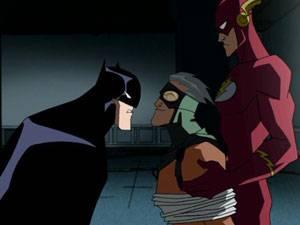
This is the Batman show you don’t really hear a whole lot about even though it ran for 5 seasons. It was made mostly to coincide with Christopher Nolan’s Batman Begins, and was meant to be a Batman: The Animated Series for a new generation (even though it premiered at the same time the old Batman was still going strong on Justice League Unlimited). It’s obvious anime-influence was overly pronounced, and it’s efforts to differentiate itself from the Batman: TAS canon uniformly regrettable.
After Justice League Unlimited ended in 2006, The Batman was allowed to incorporate more D.C. heroes in its final season. The Flash featured in “A Mirror Darkly,” seeing him join Batman and Robin to battle his own villain the Mirror Master. Similar to JL/JLU, the comedic side of the character was played up, as you can see here:
Interestingly, Charlie Schlatter voiced The Flash, as he had done in the one appearance Flash made on Superman: The Animated Series.
Batman: The Brave & The Bold (2008-2011)
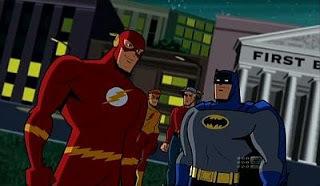
And now for something completely different. In 2008, Batman received an entirely unexpected throwback to the Silver Age (both in temperament and appearance) in the form of Batman: The Brave & The Bold. Gone was the brooding, bad-ass of past iterations (as voiced by Kevin Conroy) and in its place was a generally good-natured, witty, and ultimately likeably uncomplicated anti-Dark Knight (as voiced by Diedrich Bader). Heck, this Batman was so bereft of complications that his real life identity of Bruce Wayne was pretty much never even depicted let alone mentioned. Instead, the show – as was the case with the long-running comic book series from which it took its name – was centered on weekly adventures featuring Batman teaming up with at least 1 other D.C. comic book character.
As part of this set-up, Batman teamed up with the Jay Garrick Flash, Barry Allen Flash, and Kid Flash on multiple occasions. The Jay Garrick Flash (voiced by Andy Milder) first showed up in the season 2 episode “Golden Age of Justice,” which featured a rather knowing exploration of the alarmingly casual sexism of Golden Age comic book treatment of female characters. The Barry Allen version (voiced by Alan Tudyk!) showed up later that season in “Requiem for a Scarlet Speedster!”, which combined the famous death of Allen from the comics with his long-standing time traveling component. In a nice homage, the villain of the episode, Professor Zoom (seriously, that’s his name), was voiced by John Wesley Shipp, the Flash from the 1990 TV show.
The Flash Vs. Professor Zoom:
This episode also featured Kid Flash and the Golden Age Flash, who help Batman investigate Allen’s apparent death. Kid Flash and the regular Flash would both return for relatively small roles in separate future episodes.
Young Justice (2010-2013)
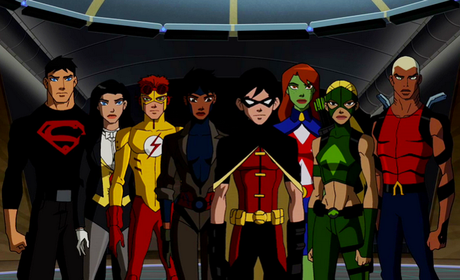
A show centered on the teenaged sidekicks of all the D.C. superheroes? Um, yeah, I’m going to watch that…never. Well, now you won’t even have an option (watch, not watch) anymore because Cartoon Network canceled Young Justice earlier this year after 2 seasons, but in so doing they canceled arguably the greatest animated show in D.C. history since Batman: TAS.
Inspired by disparate eras of both the Teen Titans and Young Justice comic books, Young Justice was not a direct adaptation of any one source but instead a general interpretation of the entirety of D.C. comic book superheroes. Set in a present day time which has only just recently become aware of superheroes, the Young Justice squad of sidekicks were basically the B-squad to the Justice League. Their roster initially consisted of the Dick Grayson Robin, a new version of Aqualad, the Wally West Kid Flash, Artemis and Speedy (Green Arrow’s sidekicks), Superboy, and Miss Martian (Martian Manhunter’s sidekick). Throughout the first season, Justice League members such as Captain Marvel, Red Tornado, Superman, Batman, and Aquaman would feature regularly, with Batman kind of serving as the Charlie to their Angels (the guy who distributes missions and responsibilities from a remote location).
Similar to how The Flash functioned on Justice League/Justice League Unlimited, Kid Flash served mostly as a comedic presence surrounding by a sea of furrowed brows. The adult, Barry Allen Flash was seen on occasion, but did not actually feature in the storyline of an episode until the second season at which point Young Justice had jumped 5 years in-between seasons and become impressively ambitious with an ingenious serialized plot and more mature themes and character explorations.
Both adult Flashes (Barry Allen, Jay Garrick) and the two sidekicks (Impulse, Kid Flash) featured in the second season episode “Bloodlines.” In the episode, Bart Allen as Impulse travels back in time from a future in which an apocalyptic event has occurred. His mission is to prevent the event from happening, and the first thing he does is attempt to save the Barry Allen Flash’s life. In the process, Kid Flash comes out of retirement, having lived a normal civilian life as a college student in-between seasons. Garrick mostly shows up just because he knows he can help. The four combine their superspeed to take down the bad guy. Impulse is depicted much as he was on Smallville, except here we discover his annoying demeanor is actually an affectation to mislead those who might suspect the truth behind his sudden appearance in the present.
“Bloodlines” also features an appearances Barry Allen’s love interest, Iris West, and lovingly mocks Allen’s overuse of his catchphrase, “Back in a flash.” Impulse and Kid Flash proved especially crucial to the unfolding plot of the season, and the adult Flash joined them in the series finale to combine all of their speed again, except this time to tragic results.
Notice how most of the stuff on this list is recent? The character had his shot at cross-over stardom over 20 years ago on his own show, but Warner Bros./D.C. has been re-building awareness of The Flash in the animated realm for the past decade beginning with Justice League. He has also featured in several of WB/D.C.’s direct-to-video feature-length animated films, most recently in the newly released Justice League: The Flashpoint Paradox. The movie is an adaptation of “Flashpoint,” a crucial Geoff Johns series from a couple of years ago which saw the Barry Allen Flash at the middle of a universe-altering crisis which segued into D.C.’s continuity re-setting New 52 re-launch.
Perhaps The Flash is popular enough that a TV show rather than a film (if it’s an either/or proposition) is beneath him. However, the history of the character on TV show indicates he’s following a similar pattern: he’s going to be a guest star to another character, Green Arrow on Arrow. Except this time he might just emerge from it a star of his own on his own show.
If I missed anything please do be kind and ever so kindly let me know. Otherwise, is there any favorite Flash moment of your’s from the mentioned shows? Still traumatized by the “Ghetto Man” roast? Still deeply depressed over the cancellation of Young Justice? Let us know in the comments.

